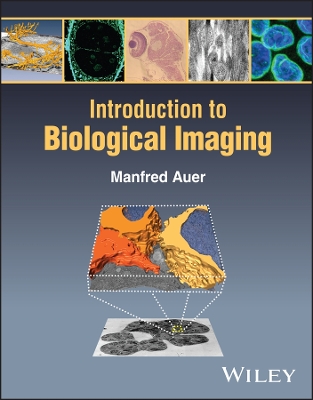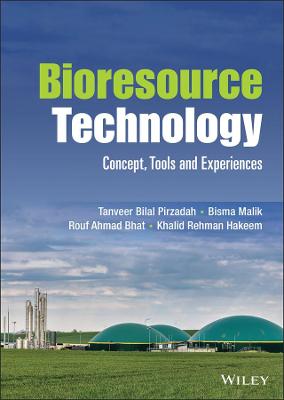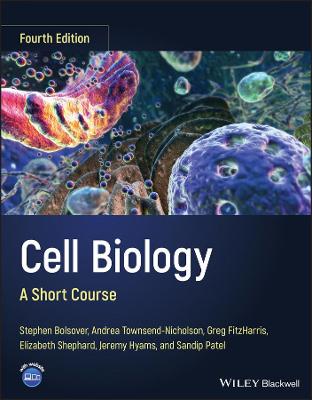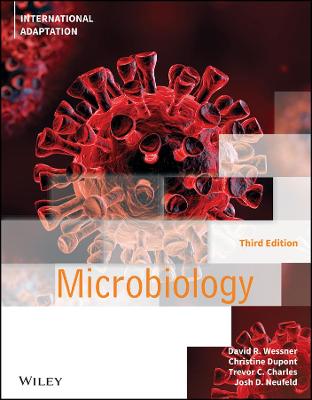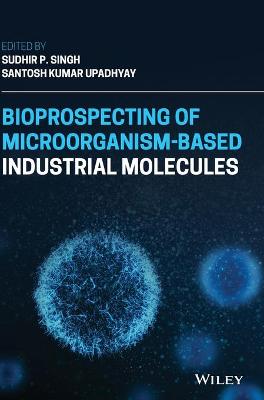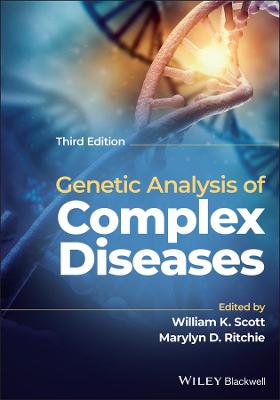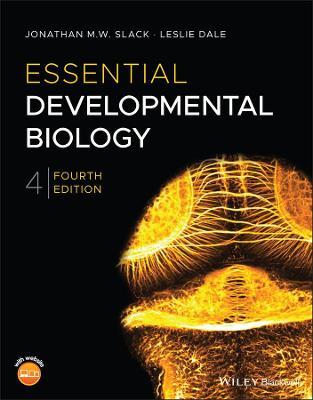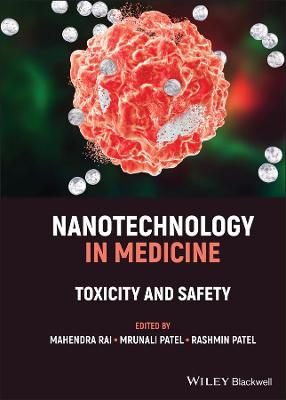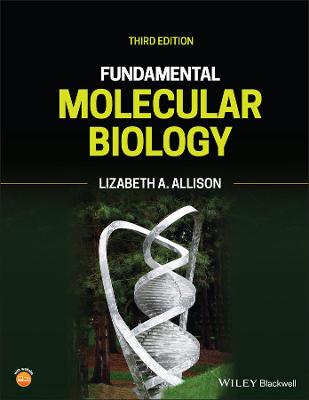Genetic Theory and Analysis
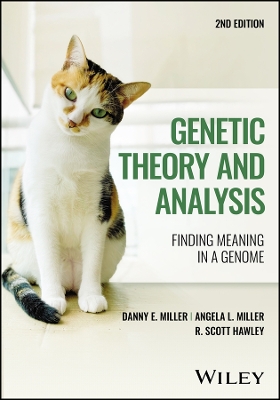 -15%
portes grátis
-15%
portes grátis
Genetic Theory and Analysis
Finding Meaning in a Genome
Miller, Danny E.; Hawley, R. Scott; Miller, Angela L.
John Wiley & Sons Inc
11/2023
304
Mole
Inglês
9781118086926
15 a 20 dias
Introduction xiii
1 Mutation 1
1.1 Types of Mutations 1
Muller's Classification of Mutants 2
Nullomorphs 2
Hypomorphs 4
Hypermorphs 5
Antimorphs 6
Neomorphs 8
Modern Mutant Terminology 10
Loss-of-Function Mutants 10
Dominant Mutants 10
Gain-of-Function Mutants 11
Separation-of-Function Mutants 11
DNA-Level Terminology 11
Base-Pair-Substitution Mutants 11
Base-Pair Insertions or Deletions 12
Chromosomal Aberrations 12
1.2 Dominance and Recessivity 13
The Cellular Meaning of Dominance 13
The Cellular Meaning of Recessivity 15
Difficulties in Applying the Terms Dominant and Recessive to Sex-Linked Mutants 16
The Genetic Utility of Dominant and Recessive Mutants 17
1.3 Summary 17
References 17
2 Mutant Hunts 20
2.1 Why Look for New Mutants? 20
Reason 1: To Identify Genes Required for a Specific Biological Process 21
Reason 2: To Isolate more Mutations in a Specific Gene of Interest 31
Reason 3: To Obtain Mutants for a Structure-Function Analysis 32
Reason 4: To Isolate Mutations in a Gene So Far Identified only by Computational Approaches 32
2.2 Mutagenesis and Mutational Mechanisms 32
Method 1: Ionizing Radiation 33
Method 2: Chemical Mutagens 33
Alkylating Agents 34
Crosslinking Agents 35
Method 3: Transposons 35
Identifying Where Your Transposon Landed 37
Why not Always Screen With TEs? 40
Method 4: Targeted Gene Disruption 40
RNA Interference 40
CRISPR/Cas9 41
TALENs 42
So Which Mutagen Should You Use? 43
2.3 What Phenotype Should You Screen (or Select) for? 44
2.4 Actually Getting Started 45
Your Starting Material 45
Pilot Screen 45
What to Keep? 45
How many Mutants is Enough? 46
Estimating the Number of Genes not Represented by Mutants in Your New Collection 46
2.5 Summary 48
References 48
3 Complementation 51
3.1 The Essence of the Complementation Test 51
3.2 Rules for Using the Complementation Test 55
The Complementation Test Can be Done Only When Both Mutants are Fully Recessive 55
The Complementation Test Does Not Require that the Two Mutants Have Exactly the Same Phenotype 56
The Phenotype of a Compound Heterozygote Can be More Extreme than that of Either Homozygote 56
3.3 How the Complementation Test Might Lie to You 57
Two Mutations in the Same Gene Complement Each Other 57
A Mutation in One Gene Silences Expression of a Nearby Gene 57
Mutations in Regulatory Elements 59
3.4 Second-Site Noncomplementation (Nonallelic Noncomplementation) 59
Type 1 SSNC (PoisonousInteractions): The Interaction is Allele Specific at Both Loci 60
An Example of Type 1 SSNC Involving the Alpha- and Beta-Tubulin Genes in Yeast 60
An Example of Type 1 SSNC Involving the Actin Genes in Yeast 62
Type 2 SSNC (Sequestration): The Interaction is Allele Specific at One Locus 66
An Example of Type 2 SSNC Involving the Tubulin Genes in Drosophila 66
An Example of Type 2 SSNC in Drosophila that Does Not Involve the Tubulin Genes 69
An Example of Type 2 SSNC in the Nematode Caenorhabditis elegans 71
Type 3 SSNC (Combined Haploinsufficiency): The Interaction is Allele-Independent at Both Loci 72
An Example of Type 3 SSNC Involving Two Motor Protein Genes in Flies 72
Summary of SSNC in Model Organisms 72
SSNC in Humans (Digenic Inheritance) 73
Pushing the Limits: Third-Site Noncomplementation 74
3.5 An Extension of SSNC: Dominant Enhancers 74
A Successful Screen for Dominant Enhancers 75
3.6 Summary 76
References 77
4 Meiotic Recombination 81
4.1 An Introduction to Meiosis 81
A Cytological Description of Meiosis 88
A More Detailed Description of Meiotic Prophase 89
4.2 Crossing Over and Chiasmata 92
4.3 The Classical Analysis of Recombination 93
4.4 Measuring the Frequency of Recombination 96
The Curious Relationship Between the Frequency of Recombination and Chiasma Frequency 97
Map Lengths and Recombination Frequency 97
The Mapping Function 99
Tetrad Analysis 100
Statistical Estimation of Recombination Frequencies 101
Two-Point Linkage Analysis 101
What Constitutes Statistically Significant Evidence for Linkage? 104
An Example of LOD Score Analysis 105
Multipoint Linkage Analysis 105
Local Mapping via Haplotype Analysis 106
The Endgame 108
The Actual Distribution of Exchange Events 109
The Centromere Effect 110
The Effects of Heterozygosity for Aberration Breakpoints on Recombination 110
Practicalities of Mapping 110
4.5 The Mechanism of Recombination 111
Gene Conversion 111
Early Models of Recombination 112
The Holliday Model 112
The Meselson-Radding Model 114
The Currently Accepted Mechanism of Recombination: The Double-Strand Break Repair Model 114
Class I Versus Class II Recombination Events 116
4.6 Summary 117
References 118
5 Identifying Homologous Genes 126
5.1 Homology 126
Orthologs 127
Paralogs 127
Xenologs 128
5.2 Identifying Sequence Homology 128
Nucleotide-Nucleotide BLAST (blastn) 129
An Example Using blastn 129
Translated Nucleotide-Protein BLAST (blastx) 131
An Example Using blastx 131
Protein-Protein BLAST (blastp) 132
An Example Using blastp 132
Translated BLASTx (tblastx) and Translated BLASTn (tblastn) 133
5.3 How Similar is Similar? 133
5.4 Summary 134
References 134
6 Suppression 136
6.1 Intragenic Suppression 137
Intragenic Suppression of Loss-of-Function Mutations 137
Intragenic Suppression of a Frameshift Mutation by the Addition of a Second, Compensatory Frameshift Mutation 138
Intragenic Suppression of Missense Mutations by the Addition of a Second and Compensatory Missense Mutation 140
Intragenic Suppression of Antimorphic Mutations that Produce a Poisonous Protein 141
6.2 Extragenic Suppression 141
6.3 Transcriptional Suppression 141
Suppression at the Level of Gene Expression 142
A CRISPR Screen for Suppression of Inhibitor Resistance in Melanoma 142
Suppression of Transposon-Insertion Mutants by Altering the Control of mRNA Processing 143
Suppression of Nonsense Mutants by Messenger Stabilization 143
6.4 Translational Suppression 144
tRNA-Mediated Nonsense Suppression 144
The Numerical and Functional Redundancy of tRNA Genes Allows Suppressor Mutations to be Viable 146
tRNA-Mediated Frameshift Suppression 146
6.5 Suppression by Post-Translational Modification 147
6.6 Conformational Suppression: Suppression as a Result of Protein-Protein Interaction 147
Searching for Suppressors that Act by Protein-Protein Interaction in Eukaryotes 148
Actin and Fimbrin in Yeast 148
Mediator Proteins and RNA Polymerase II in Yeast 150
"Lock-and-key" Conformational Suppression 152
Suppression of a Flagellar Motor Mutant in E. coli 152
Suppression of a Mutant Transporter Gene in C. elegans?152
Suppression of a Telomerase Mutant in Humans 153
6.7 Bypass Suppression: Suppression Without Physical Interaction 154
"Push me, Pull You" Bypass Suppression 155
Multicopy Bypass Suppression 156
6.8 Suppression of Dominant Mutations 157
6.9 Designing Your Own Screen for Suppressor Mutations 157
6.10 Summary 158
References 158
7 Epistasis Analysis 163
7.1 Ordering Gene Function in Pathways 163
Biosynthetic Pathways 164
Nonbiosynthetic Pathways 165
7.2 Dissection of Regulatory Hierarchies 167
Epistasis Analysis Using Mutants with Opposite Effects on the Phenotype 167
Hierarchies for Sex Determination in Drosophila?169
Epistasis Analysis Using Mutants with the Same or Similar Effects on the Final Phenotype 170
Using Opposite-Acting Conditional Mutants to Order Gene Function by Reciprocal Shift Experiments 170
Using a Drug or Agent that Stops the Pathway at a Given Point 170
Exploiting Subtle Phenotypic Differences Exhibited by Mutants that Affect the Same Signal State 172
7.3 How Might an Epistasis Experiment Mislead You? 172
7.4 Summary 173
References 173
8 Mosaic Analysis 175
8.1 Tissue Transplantation 176
Early Tissue Transplantation in Drosophila?176
Tissue Transplantation in Zebrafish 177
8.2 Mitotic Chromosome Loss 178
Loss of the Unstable Ring-X Chromosome 179
Other Mechanisms of Mitotic Chromosome Loss 179
Mosaics Derived from Sex Chromosome Loss in Humans and Mice (Turner Syndrome) 180
8.3 Mitotic Recombination 181
Gene Knockout Using the FLP/FRT or Cre-Lox Systems 182
8.4 Tissue-Specific Gene Expression 184
Gene Knockdown Using RNAi 184
Tissue-Specific Gene Editing Using CRISPR/Cas9 185
8.5 Summary 187
References 188
9 Meiotic Chromosome Segregation 191
9.1 Types and Consequences of Failed Segregation 192
9.2 The Origin of Spontaneous Nondisjunction 193
MI Exceptions 194
MII Exceptions 194
9.3 The Centromere 195
The Isolation and Analysis of the Saccharomyces cerevisiae Centromere 195
The Isolation and Analysis of the Drosophila Centromere 198
The Concept of the Epigenetic Centromere in Drosophila and Humans 200
Holocentric Chromosomes 201
9.4 Chromosome Segregation Mechanisms 202
Chiasmate Chromosome Segregation 202
Segregation Without Chiasmata (Achiasmate Chromosome Segregation) 203
Achiasmate Segregation in Drosophila Males 203
Achiasmate Segregation in D. melanogaster Females 204
Achiasmate Segregation in S. cerevisiae?205
Achiasmate Segregation in S. pombe?207
Achiasmate Segregation in Silkworm Females 207
9.5 Meiotic Drive 207
Meiotic Drive Via Spore Killing 207
An Example in Schizosaccharomyces pombe?207
An Example in D. melanogaster?208
Meiotic Drive Via Directed Segregation 208
9.6 Summary 210
References 210
Appendix A: Model Organisms 215
Appendix B: Genetic Fine-Structure Analysis 228
Appendix C: Tetrad Analysis 250
Glossary 262
Index 275
Introduction xiii
1 Mutation 1
1.1 Types of Mutations 1
Muller's Classification of Mutants 2
Nullomorphs 2
Hypomorphs 4
Hypermorphs 5
Antimorphs 6
Neomorphs 8
Modern Mutant Terminology 10
Loss-of-Function Mutants 10
Dominant Mutants 10
Gain-of-Function Mutants 11
Separation-of-Function Mutants 11
DNA-Level Terminology 11
Base-Pair-Substitution Mutants 11
Base-Pair Insertions or Deletions 12
Chromosomal Aberrations 12
1.2 Dominance and Recessivity 13
The Cellular Meaning of Dominance 13
The Cellular Meaning of Recessivity 15
Difficulties in Applying the Terms Dominant and Recessive to Sex-Linked Mutants 16
The Genetic Utility of Dominant and Recessive Mutants 17
1.3 Summary 17
References 17
2 Mutant Hunts 20
2.1 Why Look for New Mutants? 20
Reason 1: To Identify Genes Required for a Specific Biological Process 21
Reason 2: To Isolate more Mutations in a Specific Gene of Interest 31
Reason 3: To Obtain Mutants for a Structure-Function Analysis 32
Reason 4: To Isolate Mutations in a Gene So Far Identified only by Computational Approaches 32
2.2 Mutagenesis and Mutational Mechanisms 32
Method 1: Ionizing Radiation 33
Method 2: Chemical Mutagens 33
Alkylating Agents 34
Crosslinking Agents 35
Method 3: Transposons 35
Identifying Where Your Transposon Landed 37
Why not Always Screen With TEs? 40
Method 4: Targeted Gene Disruption 40
RNA Interference 40
CRISPR/Cas9 41
TALENs 42
So Which Mutagen Should You Use? 43
2.3 What Phenotype Should You Screen (or Select) for? 44
2.4 Actually Getting Started 45
Your Starting Material 45
Pilot Screen 45
What to Keep? 45
How many Mutants is Enough? 46
Estimating the Number of Genes not Represented by Mutants in Your New Collection 46
2.5 Summary 48
References 48
3 Complementation 51
3.1 The Essence of the Complementation Test 51
3.2 Rules for Using the Complementation Test 55
The Complementation Test Can be Done Only When Both Mutants are Fully Recessive 55
The Complementation Test Does Not Require that the Two Mutants Have Exactly the Same Phenotype 56
The Phenotype of a Compound Heterozygote Can be More Extreme than that of Either Homozygote 56
3.3 How the Complementation Test Might Lie to You 57
Two Mutations in the Same Gene Complement Each Other 57
A Mutation in One Gene Silences Expression of a Nearby Gene 57
Mutations in Regulatory Elements 59
3.4 Second-Site Noncomplementation (Nonallelic Noncomplementation) 59
Type 1 SSNC (PoisonousInteractions): The Interaction is Allele Specific at Both Loci 60
An Example of Type 1 SSNC Involving the Alpha- and Beta-Tubulin Genes in Yeast 60
An Example of Type 1 SSNC Involving the Actin Genes in Yeast 62
Type 2 SSNC (Sequestration): The Interaction is Allele Specific at One Locus 66
An Example of Type 2 SSNC Involving the Tubulin Genes in Drosophila 66
An Example of Type 2 SSNC in Drosophila that Does Not Involve the Tubulin Genes 69
An Example of Type 2 SSNC in the Nematode Caenorhabditis elegans 71
Type 3 SSNC (Combined Haploinsufficiency): The Interaction is Allele-Independent at Both Loci 72
An Example of Type 3 SSNC Involving Two Motor Protein Genes in Flies 72
Summary of SSNC in Model Organisms 72
SSNC in Humans (Digenic Inheritance) 73
Pushing the Limits: Third-Site Noncomplementation 74
3.5 An Extension of SSNC: Dominant Enhancers 74
A Successful Screen for Dominant Enhancers 75
3.6 Summary 76
References 77
4 Meiotic Recombination 81
4.1 An Introduction to Meiosis 81
A Cytological Description of Meiosis 88
A More Detailed Description of Meiotic Prophase 89
4.2 Crossing Over and Chiasmata 92
4.3 The Classical Analysis of Recombination 93
4.4 Measuring the Frequency of Recombination 96
The Curious Relationship Between the Frequency of Recombination and Chiasma Frequency 97
Map Lengths and Recombination Frequency 97
The Mapping Function 99
Tetrad Analysis 100
Statistical Estimation of Recombination Frequencies 101
Two-Point Linkage Analysis 101
What Constitutes Statistically Significant Evidence for Linkage? 104
An Example of LOD Score Analysis 105
Multipoint Linkage Analysis 105
Local Mapping via Haplotype Analysis 106
The Endgame 108
The Actual Distribution of Exchange Events 109
The Centromere Effect 110
The Effects of Heterozygosity for Aberration Breakpoints on Recombination 110
Practicalities of Mapping 110
4.5 The Mechanism of Recombination 111
Gene Conversion 111
Early Models of Recombination 112
The Holliday Model 112
The Meselson-Radding Model 114
The Currently Accepted Mechanism of Recombination: The Double-Strand Break Repair Model 114
Class I Versus Class II Recombination Events 116
4.6 Summary 117
References 118
5 Identifying Homologous Genes 126
5.1 Homology 126
Orthologs 127
Paralogs 127
Xenologs 128
5.2 Identifying Sequence Homology 128
Nucleotide-Nucleotide BLAST (blastn) 129
An Example Using blastn 129
Translated Nucleotide-Protein BLAST (blastx) 131
An Example Using blastx 131
Protein-Protein BLAST (blastp) 132
An Example Using blastp 132
Translated BLASTx (tblastx) and Translated BLASTn (tblastn) 133
5.3 How Similar is Similar? 133
5.4 Summary 134
References 134
6 Suppression 136
6.1 Intragenic Suppression 137
Intragenic Suppression of Loss-of-Function Mutations 137
Intragenic Suppression of a Frameshift Mutation by the Addition of a Second, Compensatory Frameshift Mutation 138
Intragenic Suppression of Missense Mutations by the Addition of a Second and Compensatory Missense Mutation 140
Intragenic Suppression of Antimorphic Mutations that Produce a Poisonous Protein 141
6.2 Extragenic Suppression 141
6.3 Transcriptional Suppression 141
Suppression at the Level of Gene Expression 142
A CRISPR Screen for Suppression of Inhibitor Resistance in Melanoma 142
Suppression of Transposon-Insertion Mutants by Altering the Control of mRNA Processing 143
Suppression of Nonsense Mutants by Messenger Stabilization 143
6.4 Translational Suppression 144
tRNA-Mediated Nonsense Suppression 144
The Numerical and Functional Redundancy of tRNA Genes Allows Suppressor Mutations to be Viable 146
tRNA-Mediated Frameshift Suppression 146
6.5 Suppression by Post-Translational Modification 147
6.6 Conformational Suppression: Suppression as a Result of Protein-Protein Interaction 147
Searching for Suppressors that Act by Protein-Protein Interaction in Eukaryotes 148
Actin and Fimbrin in Yeast 148
Mediator Proteins and RNA Polymerase II in Yeast 150
"Lock-and-key" Conformational Suppression 152
Suppression of a Flagellar Motor Mutant in E. coli 152
Suppression of a Mutant Transporter Gene in C. elegans?152
Suppression of a Telomerase Mutant in Humans 153
6.7 Bypass Suppression: Suppression Without Physical Interaction 154
"Push me, Pull You" Bypass Suppression 155
Multicopy Bypass Suppression 156
6.8 Suppression of Dominant Mutations 157
6.9 Designing Your Own Screen for Suppressor Mutations 157
6.10 Summary 158
References 158
7 Epistasis Analysis 163
7.1 Ordering Gene Function in Pathways 163
Biosynthetic Pathways 164
Nonbiosynthetic Pathways 165
7.2 Dissection of Regulatory Hierarchies 167
Epistasis Analysis Using Mutants with Opposite Effects on the Phenotype 167
Hierarchies for Sex Determination in Drosophila?169
Epistasis Analysis Using Mutants with the Same or Similar Effects on the Final Phenotype 170
Using Opposite-Acting Conditional Mutants to Order Gene Function by Reciprocal Shift Experiments 170
Using a Drug or Agent that Stops the Pathway at a Given Point 170
Exploiting Subtle Phenotypic Differences Exhibited by Mutants that Affect the Same Signal State 172
7.3 How Might an Epistasis Experiment Mislead You? 172
7.4 Summary 173
References 173
8 Mosaic Analysis 175
8.1 Tissue Transplantation 176
Early Tissue Transplantation in Drosophila?176
Tissue Transplantation in Zebrafish 177
8.2 Mitotic Chromosome Loss 178
Loss of the Unstable Ring-X Chromosome 179
Other Mechanisms of Mitotic Chromosome Loss 179
Mosaics Derived from Sex Chromosome Loss in Humans and Mice (Turner Syndrome) 180
8.3 Mitotic Recombination 181
Gene Knockout Using the FLP/FRT or Cre-Lox Systems 182
8.4 Tissue-Specific Gene Expression 184
Gene Knockdown Using RNAi 184
Tissue-Specific Gene Editing Using CRISPR/Cas9 185
8.5 Summary 187
References 188
9 Meiotic Chromosome Segregation 191
9.1 Types and Consequences of Failed Segregation 192
9.2 The Origin of Spontaneous Nondisjunction 193
MI Exceptions 194
MII Exceptions 194
9.3 The Centromere 195
The Isolation and Analysis of the Saccharomyces cerevisiae Centromere 195
The Isolation and Analysis of the Drosophila Centromere 198
The Concept of the Epigenetic Centromere in Drosophila and Humans 200
Holocentric Chromosomes 201
9.4 Chromosome Segregation Mechanisms 202
Chiasmate Chromosome Segregation 202
Segregation Without Chiasmata (Achiasmate Chromosome Segregation) 203
Achiasmate Segregation in Drosophila Males 203
Achiasmate Segregation in D. melanogaster Females 204
Achiasmate Segregation in S. cerevisiae?205
Achiasmate Segregation in S. pombe?207
Achiasmate Segregation in Silkworm Females 207
9.5 Meiotic Drive 207
Meiotic Drive Via Spore Killing 207
An Example in Schizosaccharomyces pombe?207
An Example in D. melanogaster?208
Meiotic Drive Via Directed Segregation 208
9.6 Summary 210
References 210
Appendix A: Model Organisms 215
Appendix B: Genetic Fine-Structure Analysis 228
Appendix C: Tetrad Analysis 250
Glossary 262
Index 275

